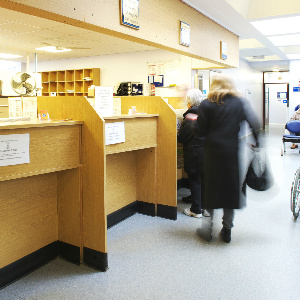Practice list size grows by 25% in some regions causing ‘crisis areas’

Exclusive An increase in average practice list sizes of up to 25% are creating ‘crisis areas’ in some parts of the country, a Pulse analysis of official figures has revealed.
An analysis of the latest Health and Social Care Information Centre figures on population sizes has revealed that the average list size grew by 197 patients – almost 3% – from April 2014 to April 2015, because of an increase in the total number of patients and a decrease in the number of practices.
This comes as Pulse has reported that practices have been struggling from the influx of new patients, with NHS England slapping a breach notice on one practice that tried to informally close their list, while practices in one area of England were given £25 for each patient they talk on after a neighbouring practice closed.
Pulse’s analysis reveals that in one CCG area – NHS Rushcliffe CCG – average practice lists increased by 2,098 patients, or 25.6%.
Meanwhile in the NHS Vale of York CCG area, average lists rose by 1,198 patients – 11.4% – and average lists in the NHS Aylesbury Vale CCG region climbed by 1,189 (12.3%).
The figures showed that the total number of practices in 2014 was 7,955, which decreased to 7,818 in 2015.
Although some of this has been down to mergers, it also demonstrates the strain being placed on practices due to neighbouring closures, which local leaders have said is creating ‘crisis areas’.
Pulse has previously revealed that there have been more than 160,000 patients displaced from their practice as a result of closures over the two years from April 2013 to April 2015.
Related stories
Analysis: Practice list sizes growing
Patients hit by practice closures: the thousands who have had to find a new GP
Dr Paul Roblin, chief executive of Berks, Buckinghamshire and Oxfordshire LMCs – which covers NHS Aylesbury Vale CCG – said that that a growing population, coupled with practice closures, is pushing up list sizes.
He said: ‘We are experiencing population growth in some areas like Bicester where there are new housing developments and there have been a small number of contract hand-backs.’
‘A smaller number of surgeries, at a time when the population is increasing, will mean that average list sizes will go up. There are a few crisis areas on my patch, for instance in one location two small surgeries might go under. That will inevitably put pressure on the remaining practices.’
Dr Tracey Vell, honorary secretary at Manchester LMC, said: ‘We are working on ways to cope with increasing list size, which is also affected by retirement and practice closures.’
Dr Hadrian Moss – a Pulse blogger – was hit with a breach notice after following BMA advice and informally closing his practice list having been unable to recruit a partner.
A spokesperson for NHS Aylesbury Vale CCG said that ‘over the period in question, two pairs of practices merged – so four effectively became two – but neither has seen any dramatic increase in list size.’
Robert Taylor, head of outcome & information for NHS Rushcliffe CCG, said: ‘The CCG data clearly shows that two factors have occurred during the study period. The first factor is that the number of patients registered with Rushcliffe practices has increased by 0.53% from 122,919 patients in March 2014 to 123,576 in March 2015.
‘The second factor is that four practices within West Bridgford have merged to form a larger practice.’
And a spokesperson for the NHS Vale of York CCG area said that recent practice mergers had reduced the CCG’s number of practices from 34 to 30. However, according to the CCG’s own figures, the total registered population for VoY has only increased by just over 1% in the past year, the spokesperson added.
Pulse July survey
Take our July 2025 survey to potentially win £1.000 worth of tokens











